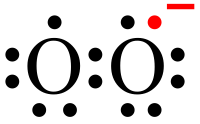Granulomatous Disease, Chronic, Autosomal Recessive, Cytochrome B-Positive, Type Iii

A number sign (#) is used with this entry because of evidence that autosomal recessive cytochrome b-positive chronic granulomatous disease (CGD) type III is caused by compound heterozygous mutation in the NCF4 gene (601488), which encodes the p40-phox (phagocyte oxidase) protein, on chromosome 22q12. One such patient has been reported.
DescriptionAutosomal recessive cytochrome b-positive chronic granulomatous disease (CGD) type III is a immunodeficiency disorder characterized by recurrent pyogenic infections and granulomatous inflammation resulting from loss of phagocyte superoxide production (summary by Matute et al., 2009).
For a general phenotypic description and a discussion of genetic heterogeneity of chronic granulomatous disease, see the well-established X-linked recessive cytochrome b-negative form (CGD; 306400).
Clinical FeaturesMatute et al. (2009) reported a 3.5-year-old boy who presented with diarrhea, low-grade fever, and perianal rash. He also had perioral eczema and aphthous ulcers. He was found to have chronic granulomatous colitis, with erosions and ulceration of the gastric fundus and colonic mucosa, and multiple small granulomata on colonic biopsy. He had a history of eczema, sinusitis, and recurrent croup. His parents were unaffected. Studies of patient neutrophils showed a selective and substantial defect in NADPH oxidase activity and intracellular superoxide production during phagocytosis. However, extracellular oxidant production in response to soluble agonists was normal. Matute et al. (2009) noted that this patient had not had infections with opportunistic pathogens characteristic of other forms of chronic granulomatous disease.
Molecular GeneticsIn a boy with autosomal recessive cytochrome b-positive chronic granulomatous disease, type III, Matute et al. (2009) identified compound heterozygosity for 2 mutations in the NCF4 gene (601488.0001 and 601488.0002).
Animal ModelEllson et al. (2006) generated p40-phox -/- mice, which were healthy and fertile when kept under pathogen-free barrier conditions. Neutrophils of p40-phox -/- mice showed reduced expression of p67-phox and diminished oxidase responses to a number of stimuli. Defective reactive oxygen species production by p40-phox -/- neutrophils in response to Staphylococcus aureus translated into a severe, CGD-like defect in the killing of this organism in vitro and in vivo. Ellson et al. (2006) concluded that p40-phox is an essential component in bacterial killing.